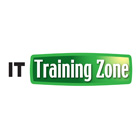Incident Management: Activities, Methods and Techniques

About the Lecture
The lecture Incident Management: Activities, Methods and Techniques by IT Training Zone is from the course ITIL® OSA - Operational Support and Analysis . It contains the following chapters:
- Lesson Contents
- Identification
- Exercise – Incident Information
- Exercise – Categories
- Prioritisation
- Escalation
- Exercise – Investigation
- Closure
Included Quiz Questions
Which of the following shows the correct order of actions in the Incident Management process?
- Identification, logging, categorisation, prioritisation, initial diagnosis, incident escalation, investigation and diagnosis, resolution and recovery, incident closure
- Identification, logging, prioritisation, categorisation, incident escalation, initial diagnosis, investigation and diagnosis, resolution and recovery, incident closure
- Identification, logging, categorisation, prioritisation, initial diagnosis, investigation and diagnosis, incident escalation resolution and recovery, incident closure
- Identification, logging, prioritisation, categorisation, initial diagnosis, incident escalation, investigation and diagnosis, resolution and recovery, incident closure
Which of these should be logged as an incident?
- A phone call/email to the Service Desk reporting a failure
- A call taken and resolved outside of normal Service Desk hours, by other staff
- An alert from Event Management, showing response time for a service has breached the acceptable level
- A repeated report of a Major Incident
- A user asking how to access email from home
Which of the following is NOT an appropriate response to a report of an incident?
- Closure, after informing the customer that there is already a major incident raised
- Closure, following a permanent resolution
- Closure, following a workaround
- Escalation to a third party support organisation
Which of these statements regarding incident prioritisation is/are true?
- Priority levels affect the target resolution time for the incident
- Priority levels are assessed by comparing the incident with the other open incidents
- Neither
Which of these statements regarding the handling of VIPs’ incidents is/are true?
- VIPs’ incidents should always be assigned the highest priority
- VIPs may be offered an enhanced SLA, with shorter resolution targets
- Neither
Which of the following is used to decide the correct priority of an incident?
- Business impact
- Urgency
- Service provider resources available
- Service provider capabilities
Which of the following statements about incident escalation is CORRECT?
- Incidents should only be functionally escalated if the Service Desk cannot resolve them within the time allowed
- Every incident should be functionally escalated as rapidly as possible to meet SLA targets
- Incidents should only be hierarchically escalated if they are likely to miss their SLA targets
- Every incident should be hierarchically escalated as rapidly as possible to meet SLA targets
Which of the following is NOT a valid action to be taken when an incident is resolved?
- The Service Desk closes the related problem record
- The Service Desk contacts the user to obtain their agreement that the incident may be closed
- The Service Desk manager examines the resolution details to understand if the incident could have been resolved at the Service Desk
- The Service Desk returns the incident to the support team if resolution details are missing or incomplete
Which of the following are valid actions following the closure of an incident?
- If it was an incident that was reported several times so that there was one “parent” record and several related “child records”, the related records are also closed, with the user’s agreement
- The incident is analysed by Problem Management
- If the incident was a Major Incident , a Major Incident Review is held
- A Customer Satisfaction Survey is sent to the user
- The problem record is also closed
Which of the following statements is/are CORRECT?
- Functional escalation may happen more than once to the same incident, from 2nd to 3rd line, 3rd line to supplier etc.
- Incidents may be escalated functionally OR hierarchically but not both.
- Neither
Customer reviews
5,0 of 5 stars
| 5 Stars |
|
5 |
| 4 Stars |
|
0 |
| 3 Stars |
|
0 |
| 2 Stars |
|
0 |
| 1 Star |
|
0 |


